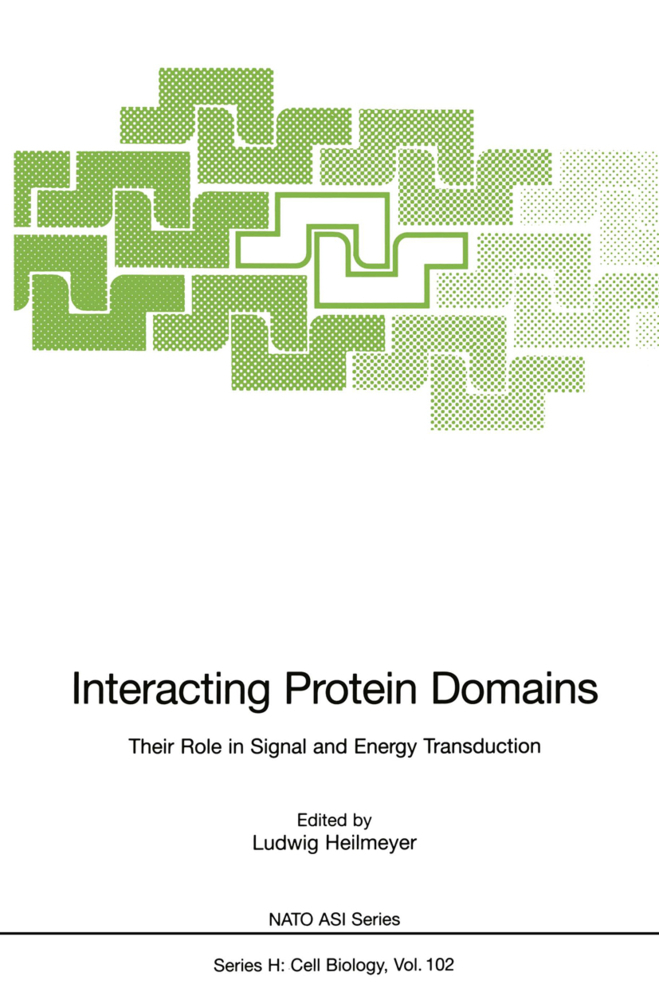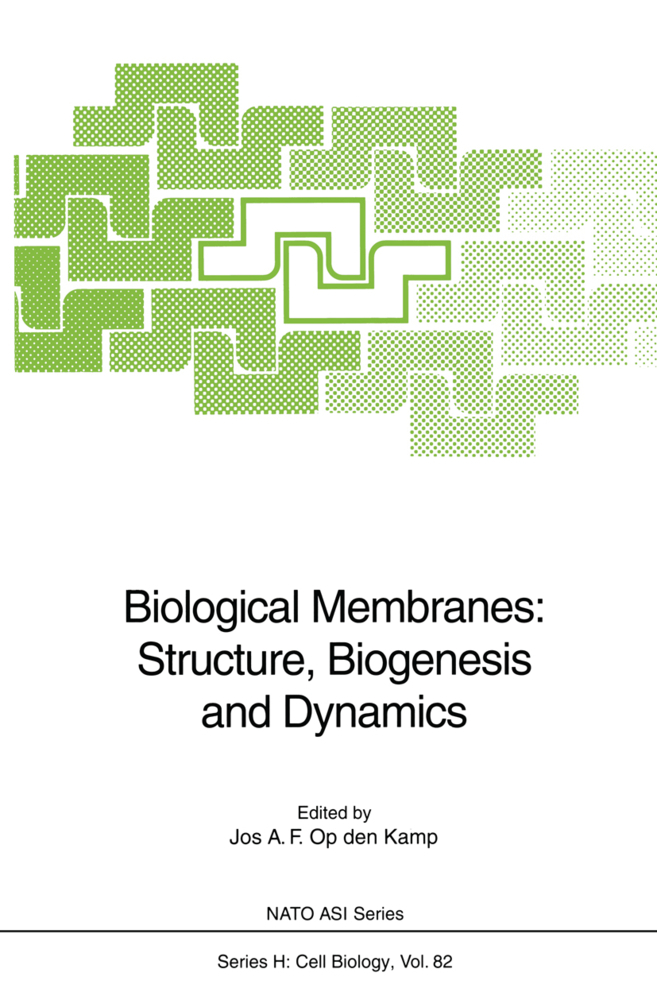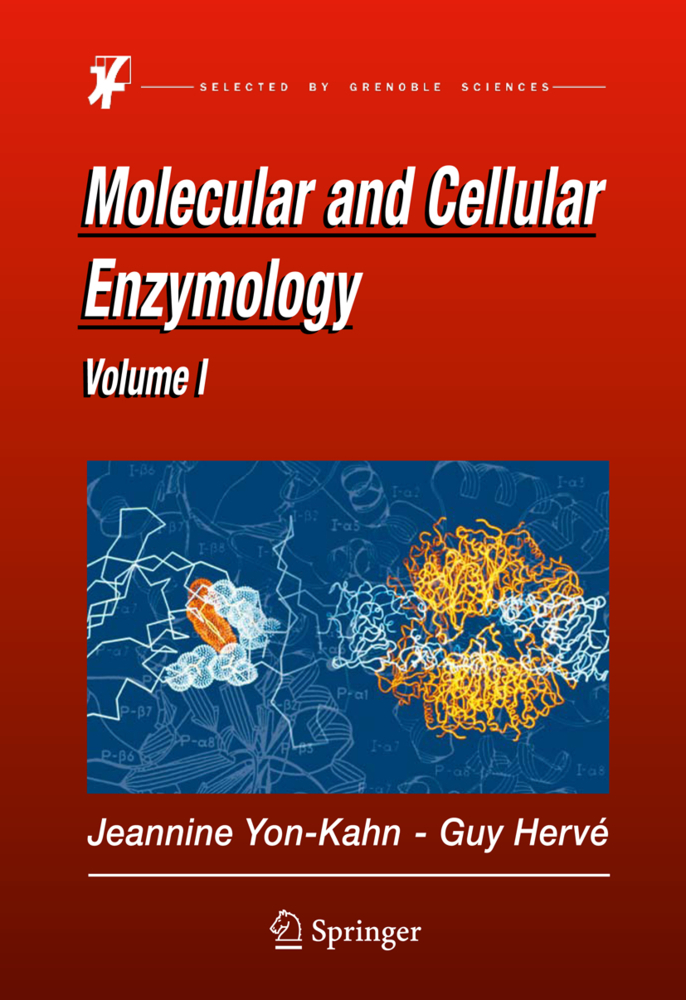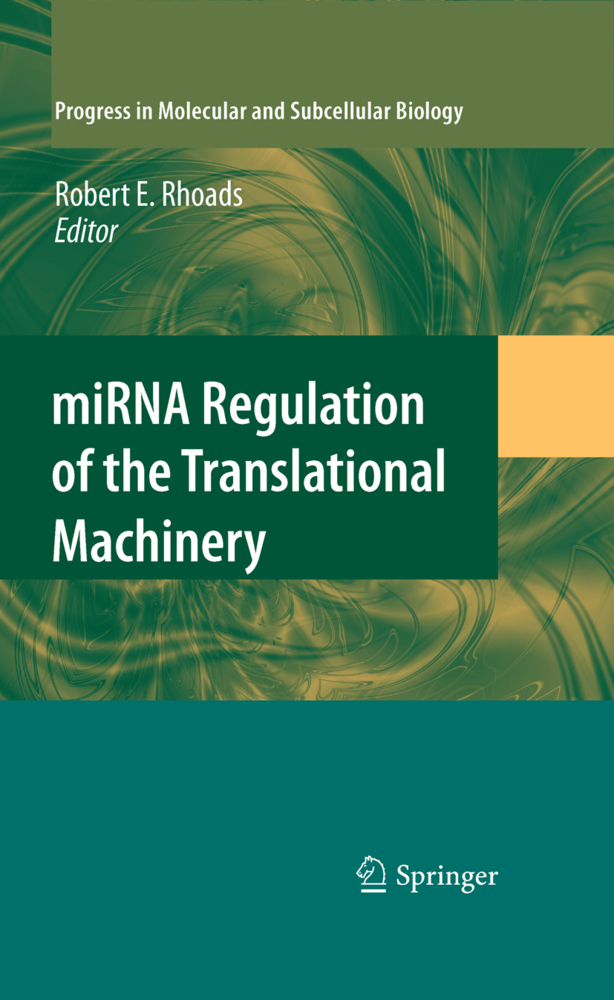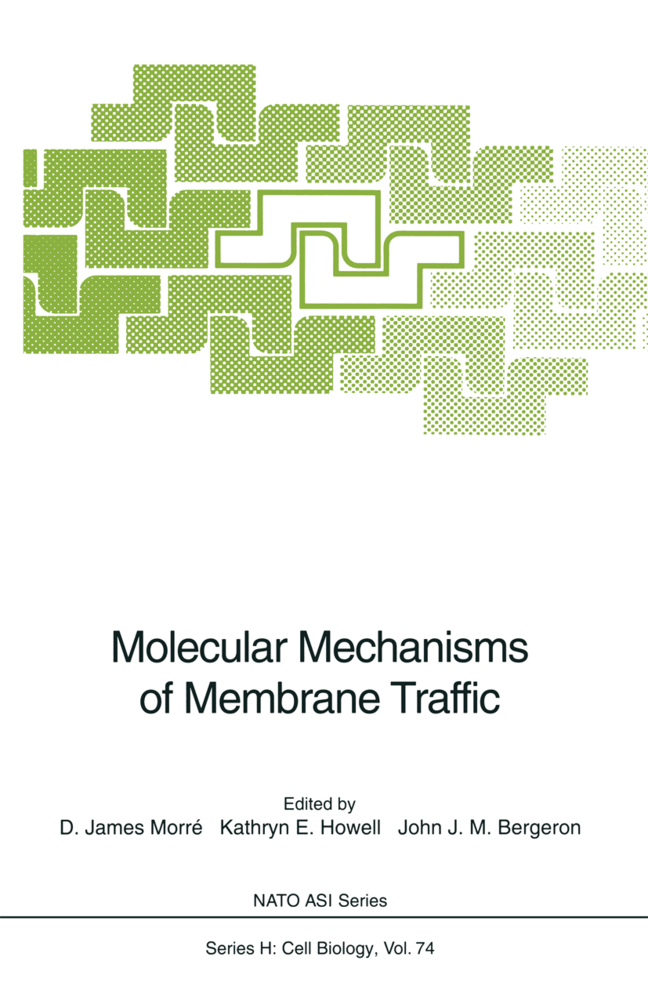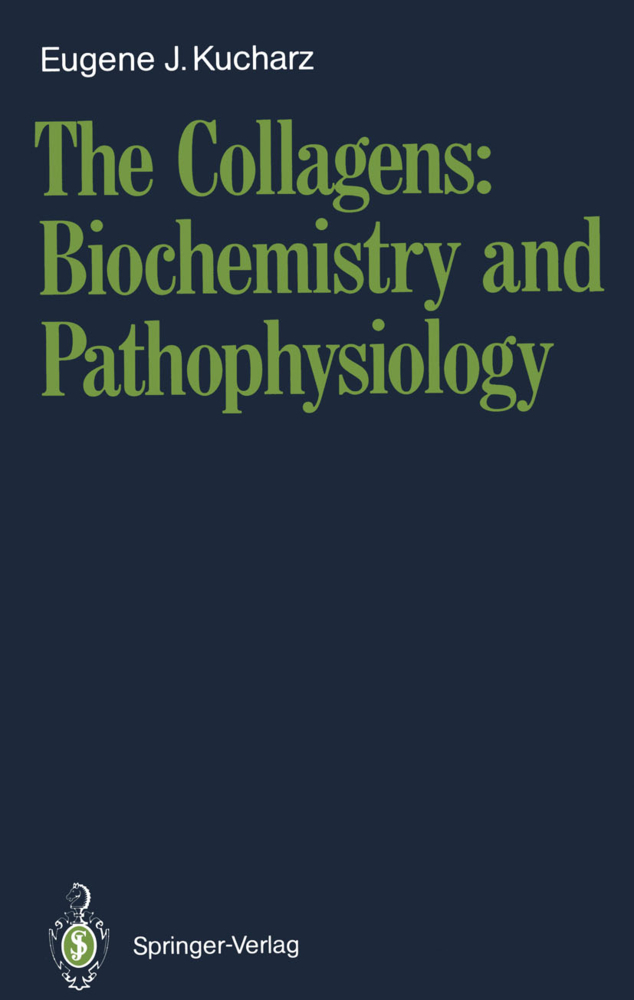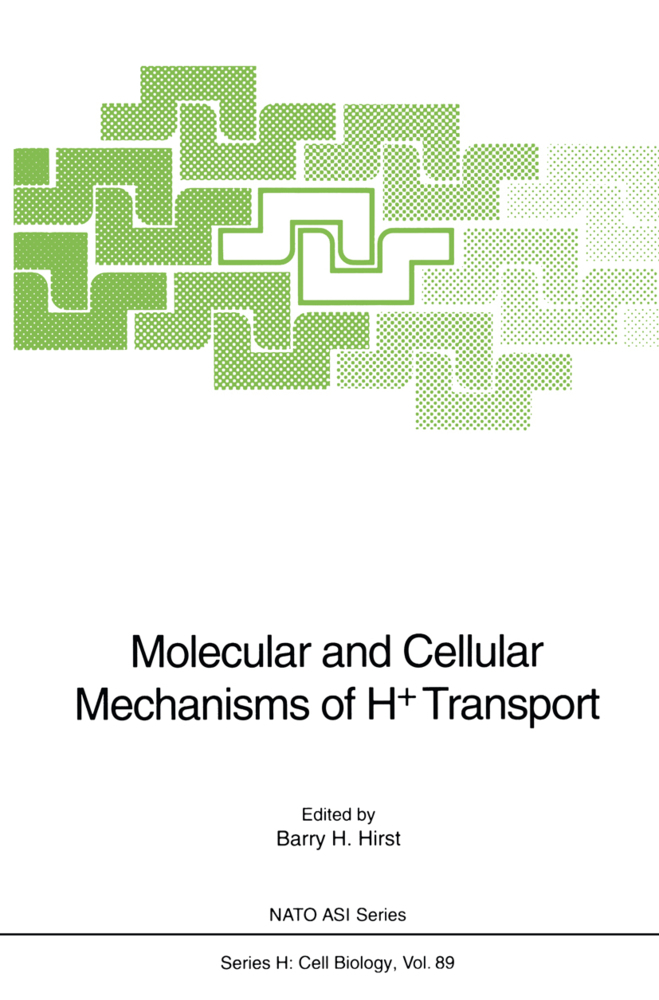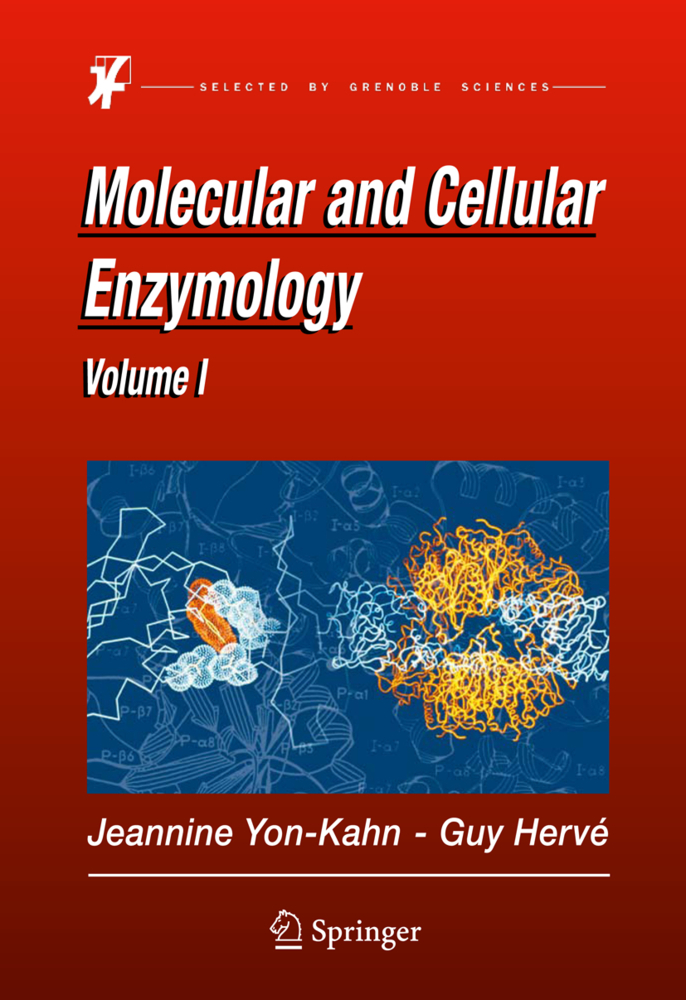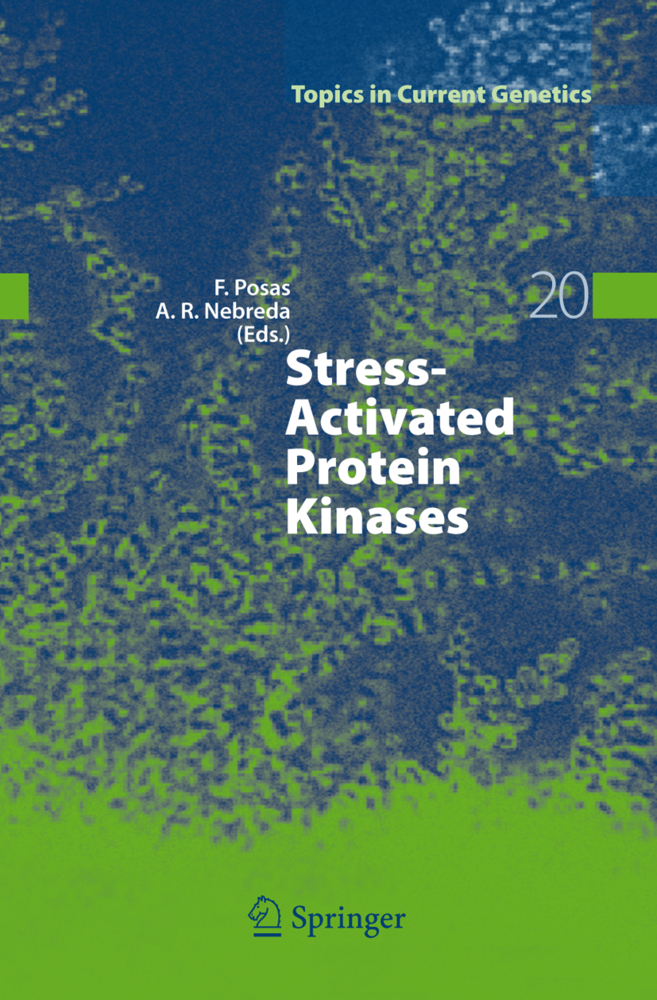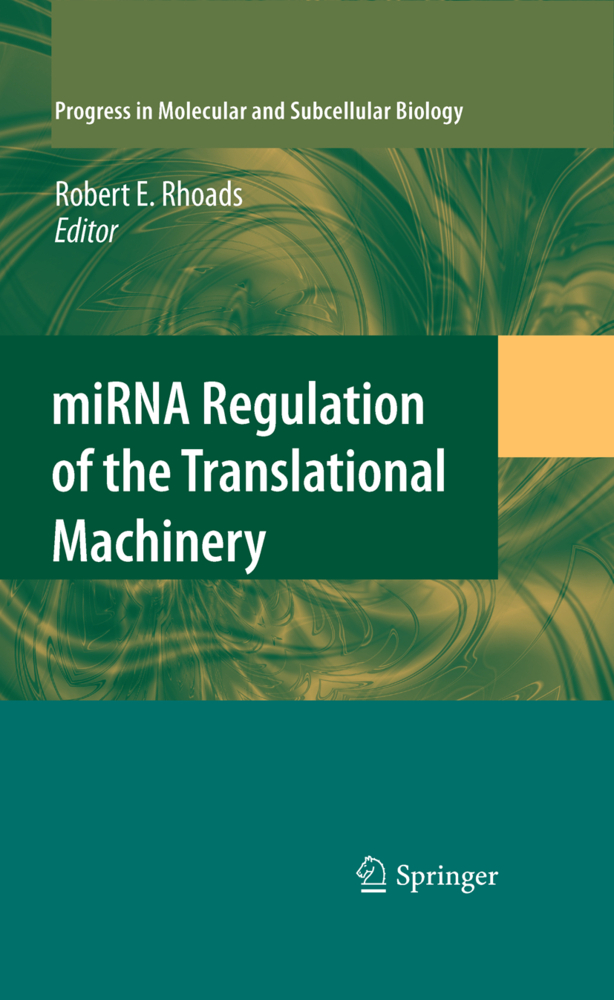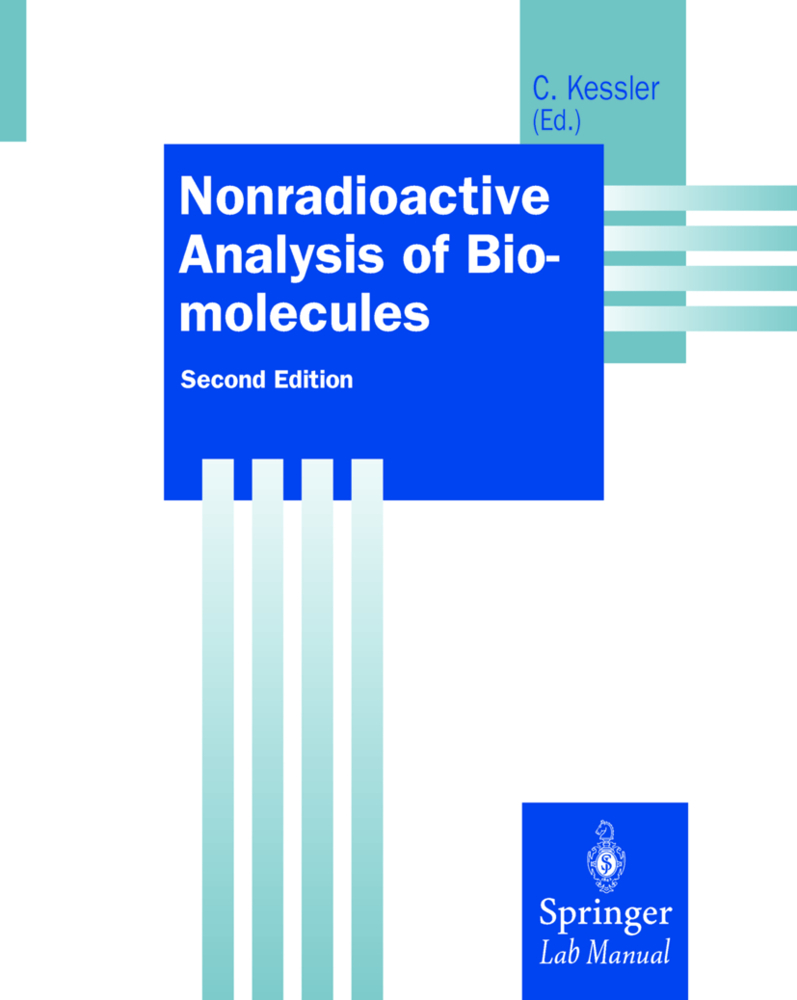Interacting Protein Domains
Their Role in Signal and Energy Transduction
Interacting Protein Domains
Their Role in Signal and Energy Transduction
This is now the fourth time that protein phosphorylation has been the focus of a NATO Advanced Study Institute. The first meeting with the topic "Signal Trans duction and Protein Phosphorylation" was held on the island of Spezai, Greece, in September 1986. The second one took place in Chateau La Londe, France, in September 1989 on "Cellular Regulation by Protein Phosphorylation", the third one on " Tyrosine Phosphorylation/Dephosphorylation and Downstream Signaling" was in September 1992 in Maratea, Italy. The titles of these books clearly mirror the developments that have taken place in the last decade. Beginning with the recognition that protein phosphorylation is at the center of signaling -clearly established in 1990 -it became apparent that many cellular processes are regulated by this mode. A new focus then emerged when it was recognized that growth factors are bound to corresponding receptors trigger protein tyrosine phosphorylation which controls cell prolifera tion. This was the topic of the third meeting in this series. It is now evident that further progress depends on understanding the three dimensional structure of the proteins involved. It goes without saying, for example, that understanding the location of proteins by adaptor proteins is only possible on the basis of the three dimensional protein structure. Therefore, the fourth meeting in this series concentrated on the protein structure of signaling molecules as well as on the elucidation of the principles of protein domain interactions.
From Phosphorylase to Phosphorylase Kinase
Protein Kinase X: A Novel Human Protein Kinase Closely Related to the Catalytic Subunit of cAMP-Dependent Protein Kinase
Interaction of Protein Kinase Ac from Ascaris Suum with Proteins and Peptides: Comparison with the Mammalian Enzyme
II: Methodology
Interaction Studies Using Biosensors
Advances in Determination of Protein Structure by X-ray Diffraction Methods
Spectroscopical Studies on the Interaction Between WW Domain and Proline-Rich Peptides
Novel Microscope-Based Approaches for the Investigation of Protein-Protein Interactions in Signal Transduction
Binding Studies with SH2 Domains from the Phosphotyrosine Kinase ZAP70 Using Surface Plasmon Resonance and Scintillation Proximity Assays
Leucine Zipper Mediated Homodimerization of Autoantigen L7 Analyzed by Electrospray Ionization Mass Spectrometry and Yeast Two Hybrid Interactions
Proteins at Work: Time-Resolved FTIR Studies of Bacteriorhodopsin and the GTP-Binding Protein 21
III: Phospholipid Signaling
Downstream Signaling from Phosphoinositide 3-Kinase
Phosphoinositide-3-Kinase Mediated Activation of JNK by the ßPDGFR
Regulation of Phospholipase C Isozymes
Substrate Binding and Catalytic Mechanism in Phospholipase C from Bacillus Cereus
Identification of Three Active Site Residues Involved in Substrate Binding by Human 43 kDa-D-myo-inositol 1,4,5-trisphosphate 5-phosphatase
Structural Basis of Protein Ligand Interactions in the Pleckstrin Homology Domain
IV: Tyrosine Phosphorylation and Downstream Signaling
Cell Signaling by Tyrosine Phosphorylation: The Other Side of the Coin
Binding Studies on the NeuronalIsoform of the Non-Receptor Protein Tyrosine Kinase pp60c-src, pp60c-srcN and Potential Target Proteins
The Switch Cycle of the Ras Protein and Its Role in Signal Transduction
In Vivo Quantitative Assessment of Ras/Raf Interaction Using the Two-Hybrid System
In Vivo Analysis of c-Raf1 - 14-3-3 Interaction
Signal Transduction Through the MAP Kinase Pathway
Identification and Characterization of MKKX, a Novel Mammalian MAP Kinase Kinase
Interleukin-1 Activates a Novel p54 MAP Kinase Kinase in Rabbit Liver
The Protein Kinase B Family - Structure, Regulation and Function
Regulation of p70s6k
Rapamycin, FRAP and the Control of 5'TOP mRNA Translation
Structure, Regulation and Targeting of Protein Phosphatase 2A
The Constitutive Activation of MET, RON and SEA Genes Induces Different Biological Responses
Nucleoside Diphosphate Kinase: Effect of the P100S Mutation on Activity and Quaternary Structure
V: Regulatory Cascades
Interaction of Adenylyl Cyclase Type 1 with ?? Subunits of Heterotrimeric G-Proteins
Regulation of G-Protein Activation in Retinal Rods by Phosducin
Selective Interactions of the Rat ?-Opioid Receptor and a Chimeric ?-Opioid Receptor Expressed in COS-7 Cells with Multiple G Proteins
Structural Requirements for the EF-Tu-Directed Kinase
Effect of the Phytotoxin Fusicoccin on Plant Plasma Membrane H+-ATPase Expressed in Yeast
Organization and Putative Regulation of the Glucose-Specific Phosphotransferase System from Staphylococcus Carnosus
VI: Regulation of Muscle Contraction
Single Molecule Myosin Mechanics Measured Using Optical Trapping
Studies on the ATP-Binding Site of Actin Using Site-Directed Mutagenesis
Characterisation of the Actin-Binding Protein Insertin
Cardiac Troponin
Studies on theFunction of the Different Phosphoforms, of Cardiac Troponin I.
I: Regulation by Reversible Protein Phosphorylation
Control of Cellular Processes by Reversible Protein PhosphorylationFrom Phosphorylase to Phosphorylase Kinase
Protein Kinase X: A Novel Human Protein Kinase Closely Related to the Catalytic Subunit of cAMP-Dependent Protein Kinase
Interaction of Protein Kinase Ac from Ascaris Suum with Proteins and Peptides: Comparison with the Mammalian Enzyme
II: Methodology
Interaction Studies Using Biosensors
Advances in Determination of Protein Structure by X-ray Diffraction Methods
Spectroscopical Studies on the Interaction Between WW Domain and Proline-Rich Peptides
Novel Microscope-Based Approaches for the Investigation of Protein-Protein Interactions in Signal Transduction
Binding Studies with SH2 Domains from the Phosphotyrosine Kinase ZAP70 Using Surface Plasmon Resonance and Scintillation Proximity Assays
Leucine Zipper Mediated Homodimerization of Autoantigen L7 Analyzed by Electrospray Ionization Mass Spectrometry and Yeast Two Hybrid Interactions
Proteins at Work: Time-Resolved FTIR Studies of Bacteriorhodopsin and the GTP-Binding Protein 21
III: Phospholipid Signaling
Downstream Signaling from Phosphoinositide 3-Kinase
Phosphoinositide-3-Kinase Mediated Activation of JNK by the ßPDGFR
Regulation of Phospholipase C Isozymes
Substrate Binding and Catalytic Mechanism in Phospholipase C from Bacillus Cereus
Identification of Three Active Site Residues Involved in Substrate Binding by Human 43 kDa-D-myo-inositol 1,4,5-trisphosphate 5-phosphatase
Structural Basis of Protein Ligand Interactions in the Pleckstrin Homology Domain
IV: Tyrosine Phosphorylation and Downstream Signaling
Cell Signaling by Tyrosine Phosphorylation: The Other Side of the Coin
Binding Studies on the NeuronalIsoform of the Non-Receptor Protein Tyrosine Kinase pp60c-src, pp60c-srcN and Potential Target Proteins
The Switch Cycle of the Ras Protein and Its Role in Signal Transduction
In Vivo Quantitative Assessment of Ras/Raf Interaction Using the Two-Hybrid System
In Vivo Analysis of c-Raf1 - 14-3-3 Interaction
Signal Transduction Through the MAP Kinase Pathway
Identification and Characterization of MKKX, a Novel Mammalian MAP Kinase Kinase
Interleukin-1 Activates a Novel p54 MAP Kinase Kinase in Rabbit Liver
The Protein Kinase B Family - Structure, Regulation and Function
Regulation of p70s6k
Rapamycin, FRAP and the Control of 5'TOP mRNA Translation
Structure, Regulation and Targeting of Protein Phosphatase 2A
The Constitutive Activation of MET, RON and SEA Genes Induces Different Biological Responses
Nucleoside Diphosphate Kinase: Effect of the P100S Mutation on Activity and Quaternary Structure
V: Regulatory Cascades
Interaction of Adenylyl Cyclase Type 1 with ?? Subunits of Heterotrimeric G-Proteins
Regulation of G-Protein Activation in Retinal Rods by Phosducin
Selective Interactions of the Rat ?-Opioid Receptor and a Chimeric ?-Opioid Receptor Expressed in COS-7 Cells with Multiple G Proteins
Structural Requirements for the EF-Tu-Directed Kinase
Effect of the Phytotoxin Fusicoccin on Plant Plasma Membrane H+-ATPase Expressed in Yeast
Organization and Putative Regulation of the Glucose-Specific Phosphotransferase System from Staphylococcus Carnosus
VI: Regulation of Muscle Contraction
Single Molecule Myosin Mechanics Measured Using Optical Trapping
Studies on the ATP-Binding Site of Actin Using Site-Directed Mutagenesis
Characterisation of the Actin-Binding Protein Insertin
Cardiac Troponin
Studies on theFunction of the Different Phosphoforms, of Cardiac Troponin I.
Heilmeyer, Ludwig
| ISBN | 978-3-642-64583-9 |
|---|---|
| Artikelnummer | 9783642645839 |
| Medientyp | Buch |
| Copyrightjahr | 2011 |
| Verlag | Springer, Berlin |
| Umfang | X, 292 Seiten |
| Abbildungen | X, 292 p. |
| Sprache | Englisch |

